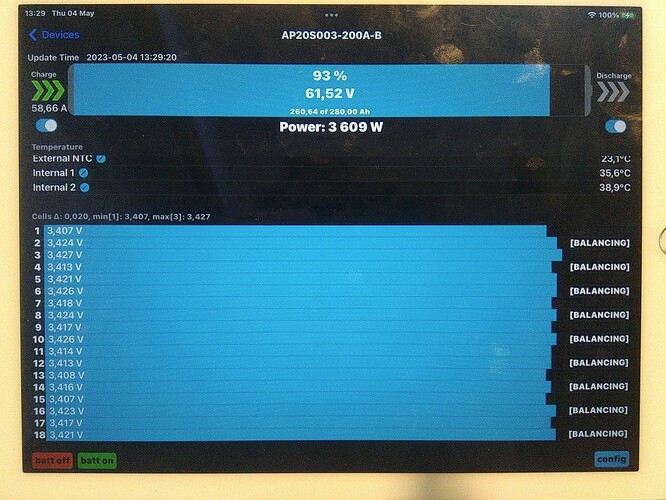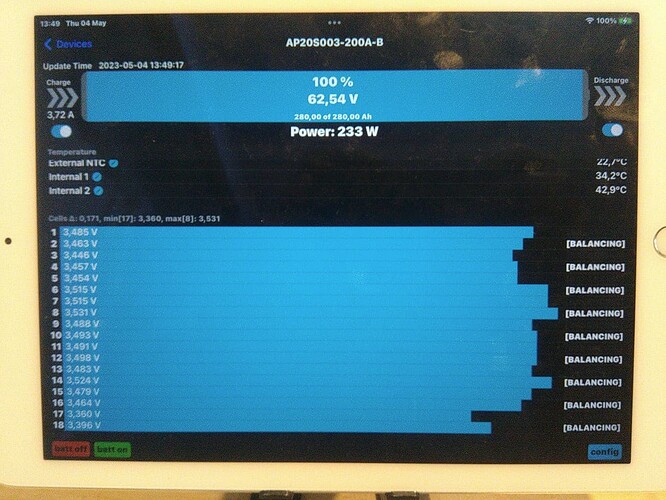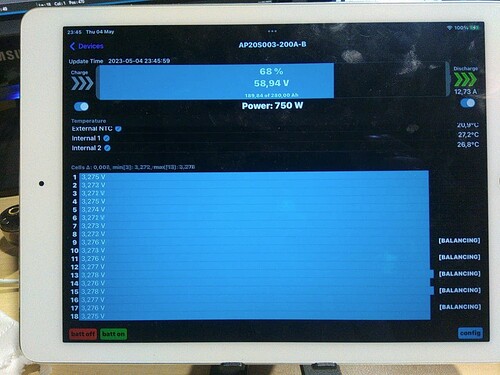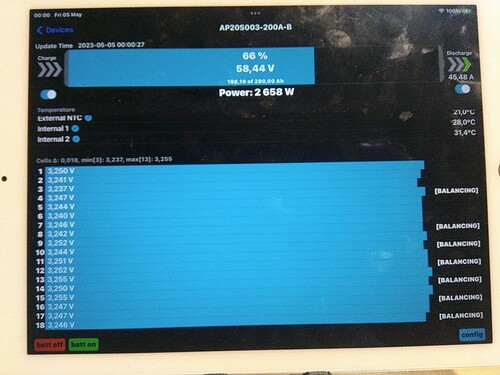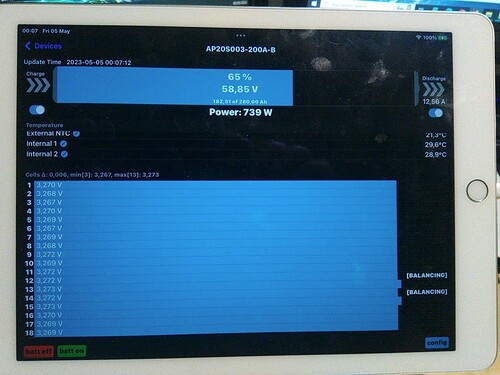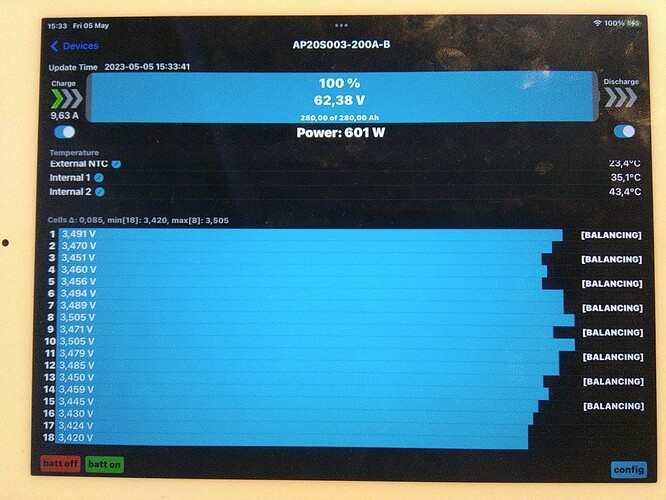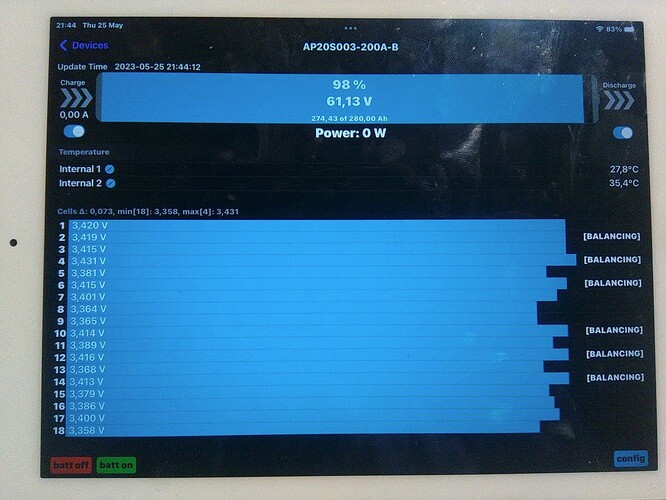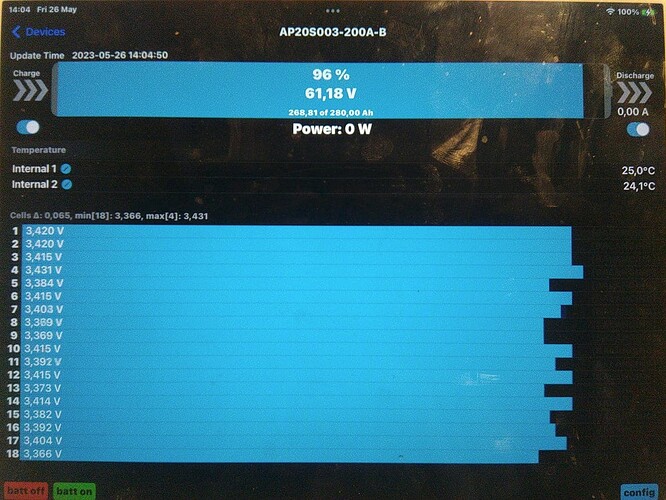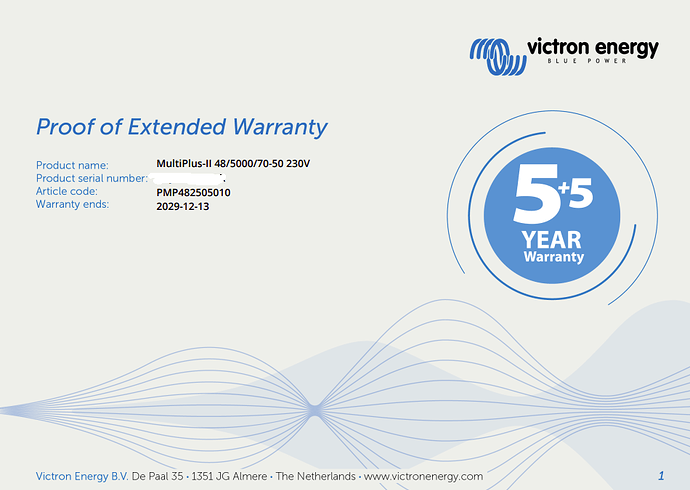YES!!! YES!!! YES!!! YES!!!
The best Delta since the new cells were installed at this point:
- NO bulbs were used.
- All settings as per Andy, him also using big ah banks.
- And Charge when Balancing was ON the whole time since last night.
Note: I have to watch it like a hawk from certain voltages … have this aversion for that thing called “DC Ripple” when you take your eyes off for a second.
The even BETTER NEWS!!!
NOW it can balance properly as it should, Victron pulled back as it always does - yes, running with no interface to the Cerbo.
Note: I still watch it, the low wattages Victron still passes, too low for the BMS to show.
At least I can switch on the geyser/oven on to keep far fr away from 3.6v … so yeah, still tied to the chair, but can walk away having switched the oven on with the door open. ![]()
Lets me see where this goes … verifying Andys result can now start. ![]()
Ps. Also stopped the NodeRED flow to allow the batts to recharge, at 100% I have to set the bank to Keep Charged so that the MPPTs don’t stop when left on Optimized.
Still going to get that Neey.
